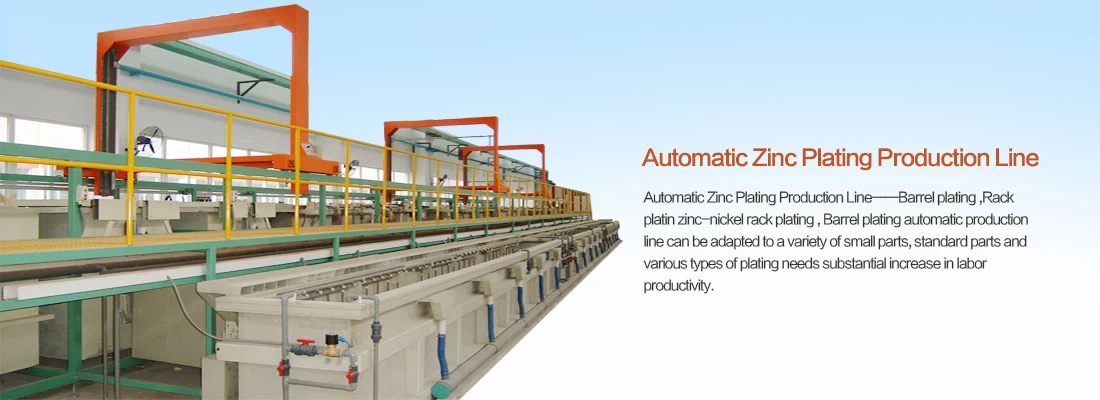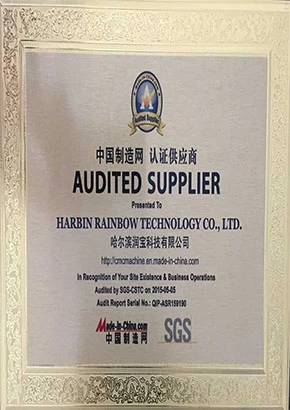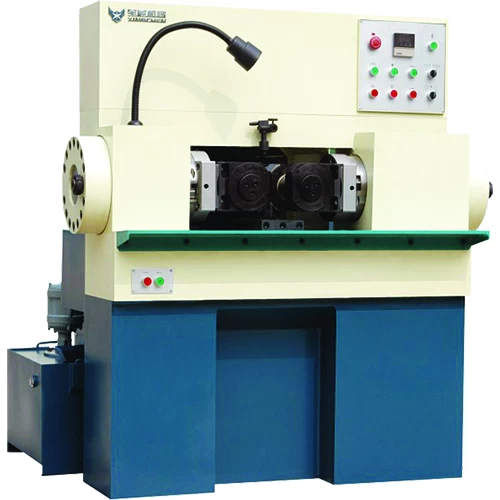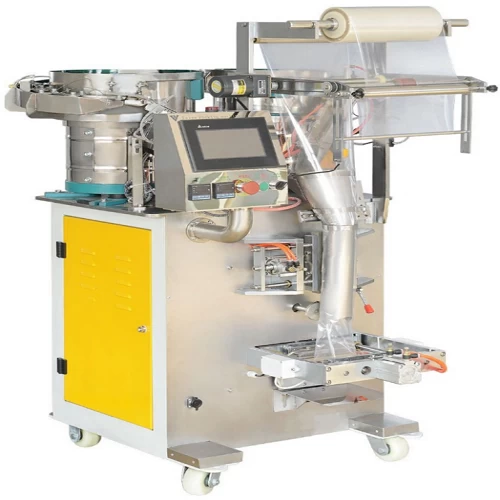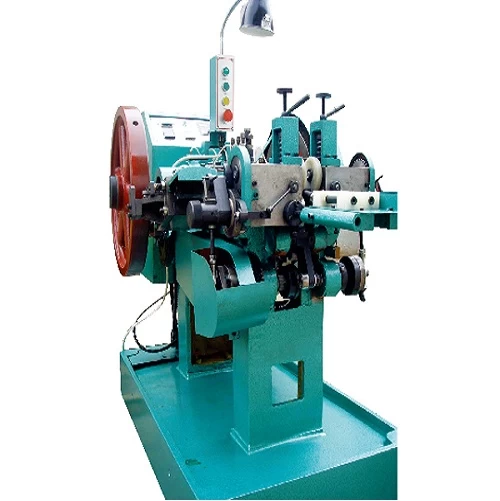What are the commonly used heat treatment processes
Gary Young
baidu
2023-08-17 10:12:05
1. Annealing
Heat the steel to A, or A; The heat treatment method of left and right a certain temperature, after heat preservation, slow (generally cooled with the furnace) and evenly cooled is called annealing. Commonly used annealing methods include homogeneous annealing, complete annealing, spheroidizing annealing, stress relief annealing, etc.
Annealing can reduce the hardness of steel, improve plasticity, make the material easy to process, and can refine the grain, uniform the structure and composition of steel, eliminate residual stress, etc.
The welding structure will produce welding residual stress after welding, which is easy to produce cracks, therefore, the important welding structure should be annealed after welding to eliminate the residual stress of welding and prevent cracks. Stress relief annealing belongs to low-temperature annealing, the heating temperature is A, below, generally 600~650 °C, keep warm for a period of time, and then cool slowly in air or furnace.
2. Normalizing
Heat the steel to A; Or A. Above 50~70 °C, after heat preservation, the heat treatment method of cooling in the air is called normalizing. Normalizing can refine the grains and improve the comprehensive mechanical properties of steel, so it is often used for the final heat treatment of carbon steel and low alloy steel. For welded structures, after normalizing, it can improve the performance of welded joints, eliminate coarse grain structure and microstructure unevenness, etc.
3. Quenching
Heat the steel (high carbon steel and medium carbon steel) to A; (over co-analytical steel) or A3 (sub-concentric steel) above 30 ~ 70 °C, maintained at this temperature for a period of time, and then quickly cooled (water cooling or oil cooling), so that the austenite does not have time to decompose, alloying elements do not have time to diffuse and form a martensitic structure, called quenching.
The purpose of quenching is to improve the hardness and wear resistance of steel. When welding high carbon steel and some low alloy steel, the near seam area may be hardened by quenching phenomenon, and cold cracks are easy to form, which should be prevented during the welding process.
4. Tempering
Tempering is a heat treatment process in which quenched steel is heated to a certain temperature below 4, and after sufficient insulation, it is cooled to a certain extent. Because the steel is hard and brittle after quenching, and the internal stress is very large, it is easy to cause cracks, so the fire is generally not the final heat treatment, and the steel must be tempered after quenching before it can be used. Tempering allows steel to improve toughness while maintaining hardness. According to the different tempering temperature, it can be divided into:
(1) Low temperature tempering (below 250°C)
The structure obtained after low temperature tempering is tempered martensite, and its performance is high hardness, wear resistance and toughness, mainly used for tools, measuring tools, wire drawing dies and other parts that require hard and wear-resistant.
(2) Medium temperature tempering (250~500°C)
The structure obtained by medium temperature tempering is tempered tostenite, which has high elastic limit and yield strength, and also has good toughness and hardness, which is mainly used for hot forging dies and elastic parts.
(3) High temperature tempering (above 500°C)
The structure obtained by high-temperature tempering is tempered cordite, and its properties are good comprehensive mechanical properties (sufficient strength and hardness, good plasticity and toughness), and can eliminate internal stress.
The continuous heat treatment process of some alloy steels after quenching and then high-temperature tempering is called quenching and tempering treatment, which has good comprehensive mechanical properties. Quenching and tempering treatment is widely used in important parts and stressed components, such as bolts, gears, crankshafts and other parts.
5. Surface heat treatment
Surface heat treatment is divided into two categories: surface quenching and chemical heat treatment.
(1) Surface quenching
The heat treatment process in which only the surface layer of the workpiece is quenched is called surface hardening. The principle is: the surface of the steel is austenitized by rapid feeding, and the heat is immediately cooled and quenched before it reaches the center of the part. Applicable circumference: medium carbon steel, medium carbon alloy steel. The methods are; Flame quenching, induction quenching, contact resistance heating quenching, quenching, etc. Flame quenching and induction hardening are described below.
1) Flame quenching
The principle is: the process of rapid heating and rapid cooling of the surface of the part by using oxygen-acetylene (or other combustible gas) flame, as shown in Fig. 2-2-12.
Its characteristics are: the heating temperature and the depth of the quenching layer are not easy to control, easy to produce overheating and uneven heating, and the quenching is unstable. No special equipment is required and is suitable for single or small batch production.
image.png
2) Induction hardening
The principle is: the heat generated by the induced current through the workpiece is used to heat the surface, partial or overall heating of the workpiece, and carry out rapid cooling quenching process, as shown in Fig. 2-2-13.
image.png
It is characterized by: fast heating speed; Good quenching quality; The depth of the hardened layer is easy to control, easy to mechanize and automate, and suitable for high-volume production.
(2) Chemical heat treatment
The heat treatment process in which the workpiece is placed in an active medium at a certain temperature to keep warm, so that one or several elements penetrate into its surface layer to change the chemical composition, structure and properties of its surface layer is called chemical heat treatment. Chemical heat treatment does not change the structure of the steel, and the chemical composition of the surface layer also changes, so it can change the performance of the part layer more effectively. According to the infiltrating elements, chemical heat treatment can be divided into carburizing, nitriding, carbonitriding, boronizing, infiltration and other chemical heat treatments.
1) Carburizing. The chemical process of placing steel in a carburizing medium to heat and insulate and make carbon atoms penetrate into the surface of the workpiece is called carburizing treatment. Its purpose is to increase the carbon content of the surface layer of the steel. After carburizing, heat treatment such as quenching and national tempering is also required to improve its hardness and wear resistance, as shown in Fig. 2-2-14.
2) Nitriding At a certain temperature, the chemical heat treatment process that infiltrates the active nitrogen atoms into the surface of the workpiece is called full treatment. Its purpose is to improve the hardness, wear resistance, corrosion resistance and fatigue strength of the surface of the part.
Nitriding has the following characteristics compared to carburizing:
(1) The nitriding layer has high hardness and wear resistance.
(2) The nitriding layer has corrosion resistance that the carburized layer does not have.
(3) Nitriding temperature is lower than carburizing, and the workpiece deformation is small.
3) Carbonitriding. At a certain temperature, carbon atoms and nitrogen atoms are simultaneously infiltrated into the austenite on the surface of the workpiece, and the chemical heat treatment process based on carburizing is called carbonitriding treatment.
It is characterized by low heating temperature, small deformation of parts, short production cycle, and high hardness, abrasion and fatigue strength of the permeable layer.
Commonly used heat treatment process
1. Annealing
Heat the steel to A, or A; The heat treatment method of left and right a certain temperature, after heat preservation, slow (generally cooled with the furnace) and evenly cooled is called annealing. Commonly used annealing methods include homogeneous annealing, complete annealing, spheroidizing annealing, stress relief annealing, etc.
Annealing can reduce the hardness of steel, improve plasticity, make the material easy to process, and can refine the grain, uniform the structure and composition of steel, eliminate residual stress, etc.
The welding structure will produce welding residual stress after welding, which is easy to produce cracks, therefore, the important welding structure should be annealed after welding to eliminate the residual stress of welding and prevent cracks. Stress relief annealing belongs to low-temperature annealing, the heating temperature is A, below, generally 600~650 °C, keep warm for a period of time, and then cool slowly in air or furnace.
2. Normalizing
Heat the steel to A; Or A. Above 50~70 °C, after heat preservation, the heat treatment method of cooling in the air is called normalizing. Normalizing can refine the grains and improve the comprehensive mechanical properties of steel, so it is often used for the final heat treatment of carbon steel and low alloy steel. For welded structures, after normalizing, it can improve the performance of welded joints, eliminate coarse grain structure and microstructure unevenness, etc.
3. Quenching
Heat the steel (high carbon steel and medium carbon steel) to A; (over co-analytical steel) or A3 (sub-concentric steel) above 30 ~ 70 °C, maintained at this temperature for a period of time, and then quickly cooled (water cooling or oil cooling), so that the austenite does not have time to decompose, alloying elements do not have time to diffuse and form a martensitic structure, called quenching.
The purpose of quenching is to improve the hardness and wear resistance of steel. When welding high carbon steel and some low alloy steel, the near seam area may be hardened by quenching phenomenon, and cold cracks are easy to form, which should be prevented during the welding process.
4. Tempering
Tempering is a heat treatment process in which quenched steel is heated to a certain temperature below 4, and after sufficient insulation, it is cooled to a certain extent. Because the steel is hard and brittle after quenching, and the internal stress is very large, it is easy to cause cracks, so the fire is generally not the final heat treatment, and the steel must be tempered after quenching before it can be used. Tempering allows steel to improve toughness while maintaining hardness. According to the different tempering temperature, it can be divided into:
(1) Low temperature tempering (below 250°C)
The structure obtained after low temperature tempering is tempered martensite, and its performance is high hardness, wear resistance and toughness, mainly used for tools, measuring tools, wire drawing dies and other parts that require hard and wear-resistant.
(2) Medium temperature tempering (250~500°C)
The structure obtained by medium temperature tempering is tempered tostenite, which has high elastic limit and yield strength, and also has good toughness and hardness, which is mainly used for hot forging dies and elastic parts.
(3) High temperature tempering (above 500°C)
The structure obtained by high-temperature tempering is tempered cordite, and its properties are good comprehensive mechanical properties (sufficient strength and hardness, good plasticity and toughness), and can eliminate internal stress.
The continuous heat treatment process of some alloy steels after quenching and then high-temperature tempering is called quenching and tempering treatment, which has good comprehensive mechanical properties. Quenching and tempering treatment is widely used in important parts and stressed components, such as bolts, gears, crankshafts and other parts.
5. Surface heat treatment
Surface heat treatment is divided into two categories: surface quenching and chemical heat treatment.
(1) Surface quenching
The heat treatment process in which only the surface layer of the workpiece is quenched is called surface hardening. The principle is: the surface of the steel is austenitized by rapid feeding, and the heat is immediately cooled and quenched before it reaches the center of the part. Applicable circumference: medium carbon steel, medium carbon alloy steel. The methods are; Flame quenching, induction quenching, contact resistance heating quenching, quenching, etc. Flame quenching and induction hardening are described below.
1) Flame quenching
The principle is: the process of rapid heating and rapid cooling of the surface of the part by using oxygen-acetylene (or other combustible gas) flame, as shown in Fig. 2-2-12.
Its characteristics are: the heating temperature and the depth of the quenching layer are not easy to control, easy to produce overheating and uneven heating, and the quenching is unstable. No special equipment is required and is suitable for single or small batch production.
image.png
2) Induction hardening
The principle is: the heat generated by the induced current through the workpiece is used to heat the surface, partial or overall heating of the workpiece, and carry out rapid cooling quenching process, as shown in Fig. 2-2-13.
image.png
It is characterized by: fast heating speed; Good quenching quality; The depth of the hardened layer is easy to control, easy to mechanize and automate, and suitable for high-volume production.
(2) Chemical heat treatment
The heat treatment process in which the workpiece is placed in an active medium at a certain temperature to keep warm, so that one or several elements penetrate into its surface layer to change the chemical composition, structure and properties of its surface layer is called chemical heat treatment. Chemical heat treatment does not change the structure of the steel, and the chemical composition of the surface layer also changes, so it can change the performance of the part layer more effectively. According to the infiltrating elements, chemical heat treatment can be divided into carburizing, nitriding, carbonitriding, boronizing, infiltration and other chemical heat treatments.
1) Carburizing. The chemical process of placing steel in a carburizing medium to heat and insulate and make carbon atoms penetrate into the surface of the workpiece is called carburizing treatment. Its purpose is to increase the carbon content of the surface layer of the steel. After carburizing, heat treatment such as quenching and national tempering is also required to improve its hardness and wear resistance, as shown in Fig. 2-2-14.
2) Nitriding At a certain temperature, the chemical heat treatment process that infiltrates the active nitrogen atoms into the surface of the workpiece is called full treatment. Its purpose is to improve the hardness, wear resistance, corrosion resistance and fatigue strength of the surface of the part.
Nitriding has the following characteristics compared to carburizing:
(1) The nitriding layer has high hardness and wear resistance.
(2) The nitriding layer has corrosion resistance that the carburized layer does not have.
(3) Nitriding temperature is lower than carburizing, and the workpiece deformation is small.
3) Carbonitriding. At a certain temperature, carbon atoms and nitrogen atoms are simultaneously infiltrated into the austenite on the surface of the workpiece, and the chemical heat treatment process based on carburizing is called carbonitriding treatment.
It is characterized by low heating temperature, small deformation of parts, short production cycle, and high hardness, abrasion and fatigue strength of the permeable layer.
Heat the steel to A, or A; The heat treatment method of left and right a certain temperature, after heat preservation, slow (generally cooled with the furnace) and evenly cooled is called annealing. Commonly used annealing methods include homogeneous annealing, complete annealing, spheroidizing annealing, stress relief annealing, etc.
Annealing can reduce the hardness of steel, improve plasticity, make the material easy to process, and can refine the grain, uniform the structure and composition of steel, eliminate residual stress, etc.
The welding structure will produce welding residual stress after welding, which is easy to produce cracks, therefore, the important welding structure should be annealed after welding to eliminate the residual stress of welding and prevent cracks. Stress relief annealing belongs to low-temperature annealing, the heating temperature is A, below, generally 600~650 °C, keep warm for a period of time, and then cool slowly in air or furnace.
2. Normalizing
Heat the steel to A; Or A. Above 50~70 °C, after heat preservation, the heat treatment method of cooling in the air is called normalizing. Normalizing can refine the grains and improve the comprehensive mechanical properties of steel, so it is often used for the final heat treatment of carbon steel and low alloy steel. For welded structures, after normalizing, it can improve the performance of welded joints, eliminate coarse grain structure and microstructure unevenness, etc.
3. Quenching
Heat the steel (high carbon steel and medium carbon steel) to A; (over co-analytical steel) or A3 (sub-concentric steel) above 30 ~ 70 °C, maintained at this temperature for a period of time, and then quickly cooled (water cooling or oil cooling), so that the austenite does not have time to decompose, alloying elements do not have time to diffuse and form a martensitic structure, called quenching.
The purpose of quenching is to improve the hardness and wear resistance of steel. When welding high carbon steel and some low alloy steel, the near seam area may be hardened by quenching phenomenon, and cold cracks are easy to form, which should be prevented during the welding process.
4. Tempering
Tempering is a heat treatment process in which quenched steel is heated to a certain temperature below 4, and after sufficient insulation, it is cooled to a certain extent. Because the steel is hard and brittle after quenching, and the internal stress is very large, it is easy to cause cracks, so the fire is generally not the final heat treatment, and the steel must be tempered after quenching before it can be used. Tempering allows steel to improve toughness while maintaining hardness. According to the different tempering temperature, it can be divided into:
(1) Low temperature tempering (below 250°C)
The structure obtained after low temperature tempering is tempered martensite, and its performance is high hardness, wear resistance and toughness, mainly used for tools, measuring tools, wire drawing dies and other parts that require hard and wear-resistant.
(2) Medium temperature tempering (250~500°C)
The structure obtained by medium temperature tempering is tempered tostenite, which has high elastic limit and yield strength, and also has good toughness and hardness, which is mainly used for hot forging dies and elastic parts.
(3) High temperature tempering (above 500°C)
The structure obtained by high-temperature tempering is tempered cordite, and its properties are good comprehensive mechanical properties (sufficient strength and hardness, good plasticity and toughness), and can eliminate internal stress.
The continuous heat treatment process of some alloy steels after quenching and then high-temperature tempering is called quenching and tempering treatment, which has good comprehensive mechanical properties. Quenching and tempering treatment is widely used in important parts and stressed components, such as bolts, gears, crankshafts and other parts.
5. Surface heat treatment
Surface heat treatment is divided into two categories: surface quenching and chemical heat treatment.
(1) Surface quenching
The heat treatment process in which only the surface layer of the workpiece is quenched is called surface hardening. The principle is: the surface of the steel is austenitized by rapid feeding, and the heat is immediately cooled and quenched before it reaches the center of the part. Applicable circumference: medium carbon steel, medium carbon alloy steel. The methods are; Flame quenching, induction quenching, contact resistance heating quenching, quenching, etc. Flame quenching and induction hardening are described below.
1) Flame quenching
The principle is: the process of rapid heating and rapid cooling of the surface of the part by using oxygen-acetylene (or other combustible gas) flame, as shown in Fig. 2-2-12.
Its characteristics are: the heating temperature and the depth of the quenching layer are not easy to control, easy to produce overheating and uneven heating, and the quenching is unstable. No special equipment is required and is suitable for single or small batch production.
image.png
2) Induction hardening
The principle is: the heat generated by the induced current through the workpiece is used to heat the surface, partial or overall heating of the workpiece, and carry out rapid cooling quenching process, as shown in Fig. 2-2-13.
image.png
It is characterized by: fast heating speed; Good quenching quality; The depth of the hardened layer is easy to control, easy to mechanize and automate, and suitable for high-volume production.
(2) Chemical heat treatment
The heat treatment process in which the workpiece is placed in an active medium at a certain temperature to keep warm, so that one or several elements penetrate into its surface layer to change the chemical composition, structure and properties of its surface layer is called chemical heat treatment. Chemical heat treatment does not change the structure of the steel, and the chemical composition of the surface layer also changes, so it can change the performance of the part layer more effectively. According to the infiltrating elements, chemical heat treatment can be divided into carburizing, nitriding, carbonitriding, boronizing, infiltration and other chemical heat treatments.
1) Carburizing. The chemical process of placing steel in a carburizing medium to heat and insulate and make carbon atoms penetrate into the surface of the workpiece is called carburizing treatment. Its purpose is to increase the carbon content of the surface layer of the steel. After carburizing, heat treatment such as quenching and national tempering is also required to improve its hardness and wear resistance, as shown in Fig. 2-2-14.
2) Nitriding At a certain temperature, the chemical heat treatment process that infiltrates the active nitrogen atoms into the surface of the workpiece is called full treatment. Its purpose is to improve the hardness, wear resistance, corrosion resistance and fatigue strength of the surface of the part.
Nitriding has the following characteristics compared to carburizing:
(1) The nitriding layer has high hardness and wear resistance.
(2) The nitriding layer has corrosion resistance that the carburized layer does not have.
(3) Nitriding temperature is lower than carburizing, and the workpiece deformation is small.
3) Carbonitriding. At a certain temperature, carbon atoms and nitrogen atoms are simultaneously infiltrated into the austenite on the surface of the workpiece, and the chemical heat treatment process based on carburizing is called carbonitriding treatment.
It is characterized by low heating temperature, small deformation of parts, short production cycle, and high hardness, abrasion and fatigue strength of the permeable layer.
Commonly used heat treatment process
1. Annealing
Heat the steel to A, or A; The heat treatment method of left and right a certain temperature, after heat preservation, slow (generally cooled with the furnace) and evenly cooled is called annealing. Commonly used annealing methods include homogeneous annealing, complete annealing, spheroidizing annealing, stress relief annealing, etc.
Annealing can reduce the hardness of steel, improve plasticity, make the material easy to process, and can refine the grain, uniform the structure and composition of steel, eliminate residual stress, etc.
The welding structure will produce welding residual stress after welding, which is easy to produce cracks, therefore, the important welding structure should be annealed after welding to eliminate the residual stress of welding and prevent cracks. Stress relief annealing belongs to low-temperature annealing, the heating temperature is A, below, generally 600~650 °C, keep warm for a period of time, and then cool slowly in air or furnace.
2. Normalizing
Heat the steel to A; Or A. Above 50~70 °C, after heat preservation, the heat treatment method of cooling in the air is called normalizing. Normalizing can refine the grains and improve the comprehensive mechanical properties of steel, so it is often used for the final heat treatment of carbon steel and low alloy steel. For welded structures, after normalizing, it can improve the performance of welded joints, eliminate coarse grain structure and microstructure unevenness, etc.
3. Quenching
Heat the steel (high carbon steel and medium carbon steel) to A; (over co-analytical steel) or A3 (sub-concentric steel) above 30 ~ 70 °C, maintained at this temperature for a period of time, and then quickly cooled (water cooling or oil cooling), so that the austenite does not have time to decompose, alloying elements do not have time to diffuse and form a martensitic structure, called quenching.
The purpose of quenching is to improve the hardness and wear resistance of steel. When welding high carbon steel and some low alloy steel, the near seam area may be hardened by quenching phenomenon, and cold cracks are easy to form, which should be prevented during the welding process.
4. Tempering
Tempering is a heat treatment process in which quenched steel is heated to a certain temperature below 4, and after sufficient insulation, it is cooled to a certain extent. Because the steel is hard and brittle after quenching, and the internal stress is very large, it is easy to cause cracks, so the fire is generally not the final heat treatment, and the steel must be tempered after quenching before it can be used. Tempering allows steel to improve toughness while maintaining hardness. According to the different tempering temperature, it can be divided into:
(1) Low temperature tempering (below 250°C)
The structure obtained after low temperature tempering is tempered martensite, and its performance is high hardness, wear resistance and toughness, mainly used for tools, measuring tools, wire drawing dies and other parts that require hard and wear-resistant.
(2) Medium temperature tempering (250~500°C)
The structure obtained by medium temperature tempering is tempered tostenite, which has high elastic limit and yield strength, and also has good toughness and hardness, which is mainly used for hot forging dies and elastic parts.
(3) High temperature tempering (above 500°C)
The structure obtained by high-temperature tempering is tempered cordite, and its properties are good comprehensive mechanical properties (sufficient strength and hardness, good plasticity and toughness), and can eliminate internal stress.
The continuous heat treatment process of some alloy steels after quenching and then high-temperature tempering is called quenching and tempering treatment, which has good comprehensive mechanical properties. Quenching and tempering treatment is widely used in important parts and stressed components, such as bolts, gears, crankshafts and other parts.
5. Surface heat treatment
Surface heat treatment is divided into two categories: surface quenching and chemical heat treatment.
(1) Surface quenching
The heat treatment process in which only the surface layer of the workpiece is quenched is called surface hardening. The principle is: the surface of the steel is austenitized by rapid feeding, and the heat is immediately cooled and quenched before it reaches the center of the part. Applicable circumference: medium carbon steel, medium carbon alloy steel. The methods are; Flame quenching, induction quenching, contact resistance heating quenching, quenching, etc. Flame quenching and induction hardening are described below.
1) Flame quenching
The principle is: the process of rapid heating and rapid cooling of the surface of the part by using oxygen-acetylene (or other combustible gas) flame, as shown in Fig. 2-2-12.
Its characteristics are: the heating temperature and the depth of the quenching layer are not easy to control, easy to produce overheating and uneven heating, and the quenching is unstable. No special equipment is required and is suitable for single or small batch production.
image.png
2) Induction hardening
The principle is: the heat generated by the induced current through the workpiece is used to heat the surface, partial or overall heating of the workpiece, and carry out rapid cooling quenching process, as shown in Fig. 2-2-13.
image.png
It is characterized by: fast heating speed; Good quenching quality; The depth of the hardened layer is easy to control, easy to mechanize and automate, and suitable for high-volume production.
(2) Chemical heat treatment
The heat treatment process in which the workpiece is placed in an active medium at a certain temperature to keep warm, so that one or several elements penetrate into its surface layer to change the chemical composition, structure and properties of its surface layer is called chemical heat treatment. Chemical heat treatment does not change the structure of the steel, and the chemical composition of the surface layer also changes, so it can change the performance of the part layer more effectively. According to the infiltrating elements, chemical heat treatment can be divided into carburizing, nitriding, carbonitriding, boronizing, infiltration and other chemical heat treatments.
1) Carburizing. The chemical process of placing steel in a carburizing medium to heat and insulate and make carbon atoms penetrate into the surface of the workpiece is called carburizing treatment. Its purpose is to increase the carbon content of the surface layer of the steel. After carburizing, heat treatment such as quenching and national tempering is also required to improve its hardness and wear resistance, as shown in Fig. 2-2-14.
2) Nitriding At a certain temperature, the chemical heat treatment process that infiltrates the active nitrogen atoms into the surface of the workpiece is called full treatment. Its purpose is to improve the hardness, wear resistance, corrosion resistance and fatigue strength of the surface of the part.
Nitriding has the following characteristics compared to carburizing:
(1) The nitriding layer has high hardness and wear resistance.
(2) The nitriding layer has corrosion resistance that the carburized layer does not have.
(3) Nitriding temperature is lower than carburizing, and the workpiece deformation is small.
3) Carbonitriding. At a certain temperature, carbon atoms and nitrogen atoms are simultaneously infiltrated into the austenite on the surface of the workpiece, and the chemical heat treatment process based on carburizing is called carbonitriding treatment.
It is characterized by low heating temperature, small deformation of parts, short production cycle, and high hardness, abrasion and fatigue strength of the permeable layer.



